How to play minor pentatonic riffs
Learn how to use this essential scale, with two hard-rock riff tabs and two scale shapes
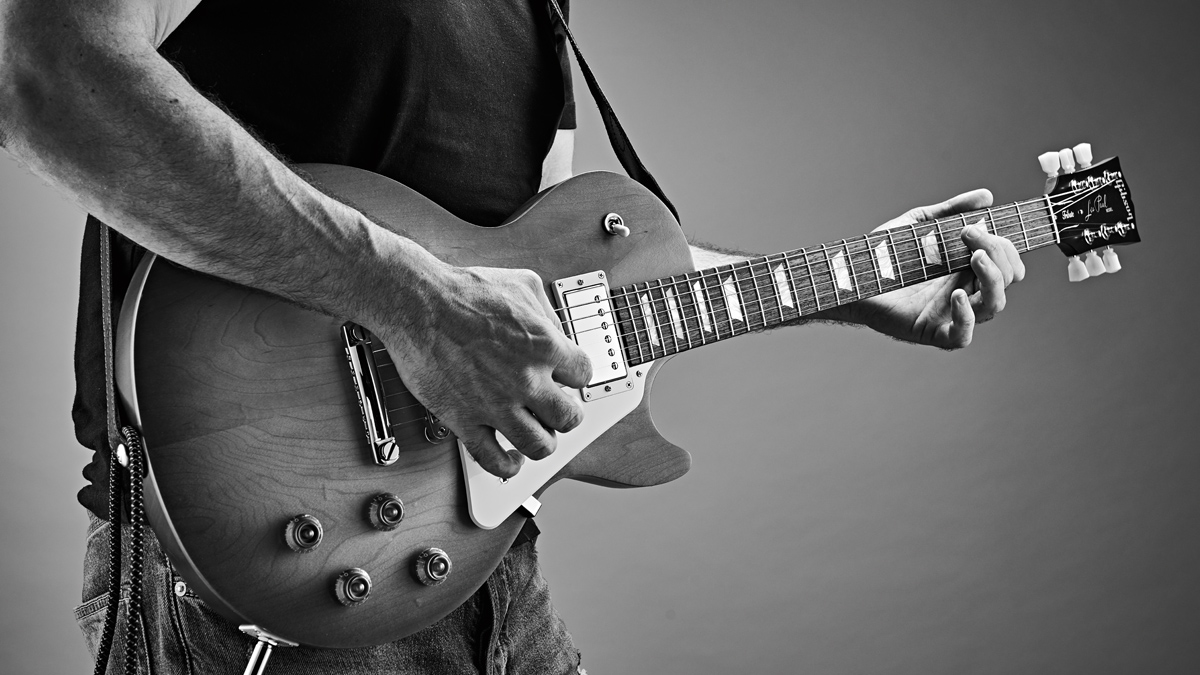
“What’s the minor pentatonic scale?”
This is a sequence of notes which guitarists use a lot. And we mean a lot! It appears extensively in blues, metal, jazz and almost any pop- and rock-based styles for that matter. Greats like Angus Young and BB King as well as more contemporary rockers like Scott Holiday, Jake Kiszka and Joel O’Keeffe base loads of riffs and solos around it.
“Interesting. Tell me more.”
Well, the minor pentatonic scale gets its name from ‘penta-’ meaning ‘five’ and ‘-tonic’ meaning ‘tones’, or, more simply, ‘notes’. Obviously, what we’re telling you is that it’s a five-note scale. And, just like a minor chord, there’s a dark, moody vibe – that’s what minor means, if you remember.
“It’s a moody five-note scale. I get it! How can I use it in my playing?”
The easiest way to use the scale is to play one note at a time – so that means you’ll be playing simple solos or riffs. We’ve looked at pentatonic solos before so let’s look at riffs here.
“Okay. What exactly is a riff?”
It’s a fairly loose term but generally it refers to a short repeating line of music. Think of tracks like Layla by Derek And The Dominos, Seven Nation Army by The White Stripes or BLOW by Ed Sheeran, Chris Stapleton and Bruno Mars. They are not all 100 per cent strictly pentatonic (close though!) but they’re solid examples of riffs.
“I get it. Show me the scale!”
Sure! In Shape Up Your Playing [below] we’ve given you two shapes of the E minor pentatonic scale.
“Not sure I understand the second shape…”
It’s still the E minor pentatonic scale, but we’ve added some notes below the E. Try ignoring the low notes and just playing from E to E – you’ll start to get a feel for the low notes soon.
“Okay. How do I start playing my own riffs?”
Try playing our first tab example below to get the idea. We took a handful of notes from the first shape and just, well, played around! Improvising like this is a great way to write riffs. Just aim for something simple that sticks in your mind, rather than playing a solo.
“The second tab example seems harder…”
There’s a quick flurry of notes at the start, admittedly, but it’s all taken from the scale shapes we’ve looked at. Play through the scales again and it should start to feel familiar.
Two essential minor pentatonic scale shapes
There are two shapes to learn here. Spend most of your time on the first one – it’s the easiest one to remember because it starts and ends on a root note. It’s also played in open position, which makes it a bit easier.
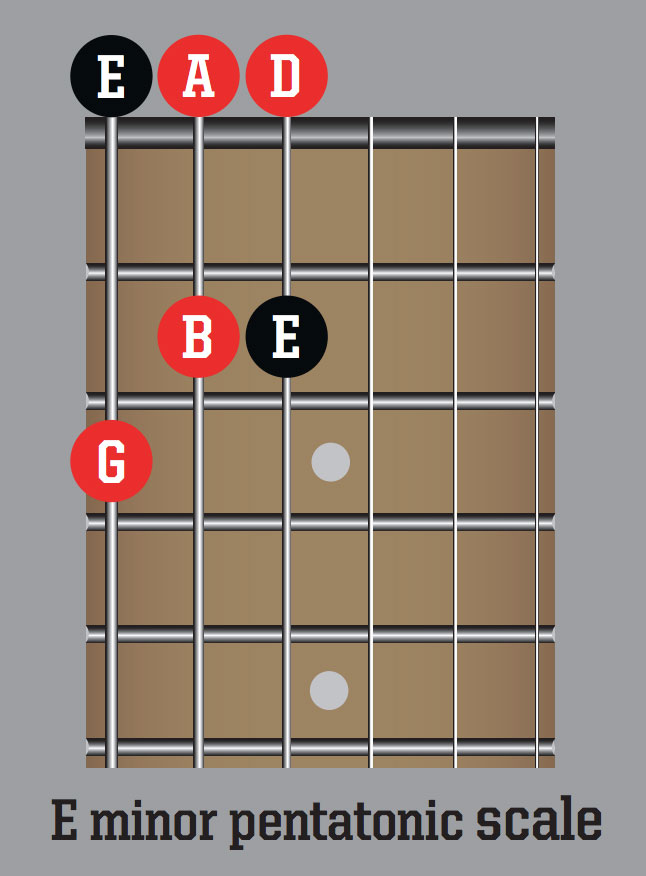
1. E minor pentatonic scale in open position
The dots tell you where to put your fingers on the fretboard. You'll be playing one note at a time, so, if you start on the lowest note and work your way up you'll have E, G, A, B, D and another E note.
The second shape moves the scale up the fretboard and includes three notes below its root note but we can explain that!
2. Further up the fretboard
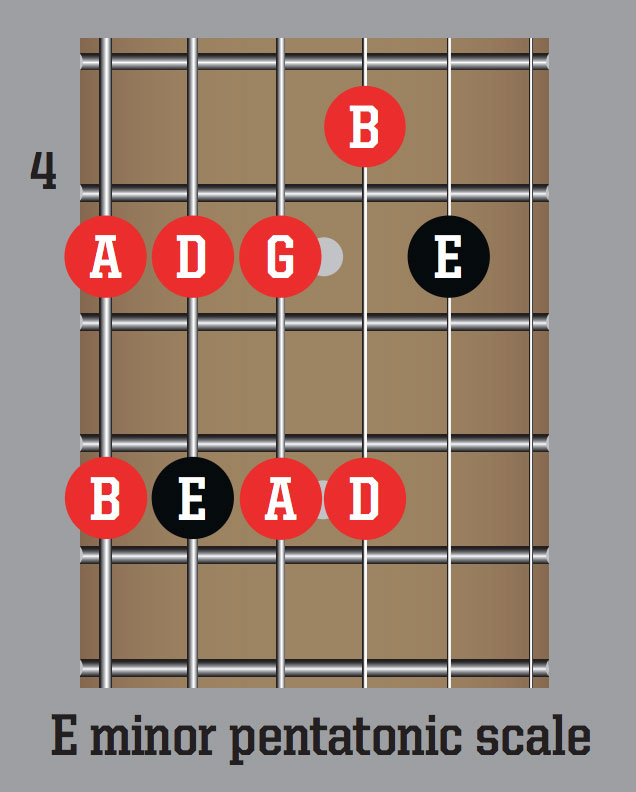
This is the same scale but starting on a higher E. They might be in a different part of the fretboard, but these are still the same five notes (E, G, A, B and D). It doesn't matter where you play them - these five notes always form the E minor pentatonic scale.
Example 1. Easy open position riff
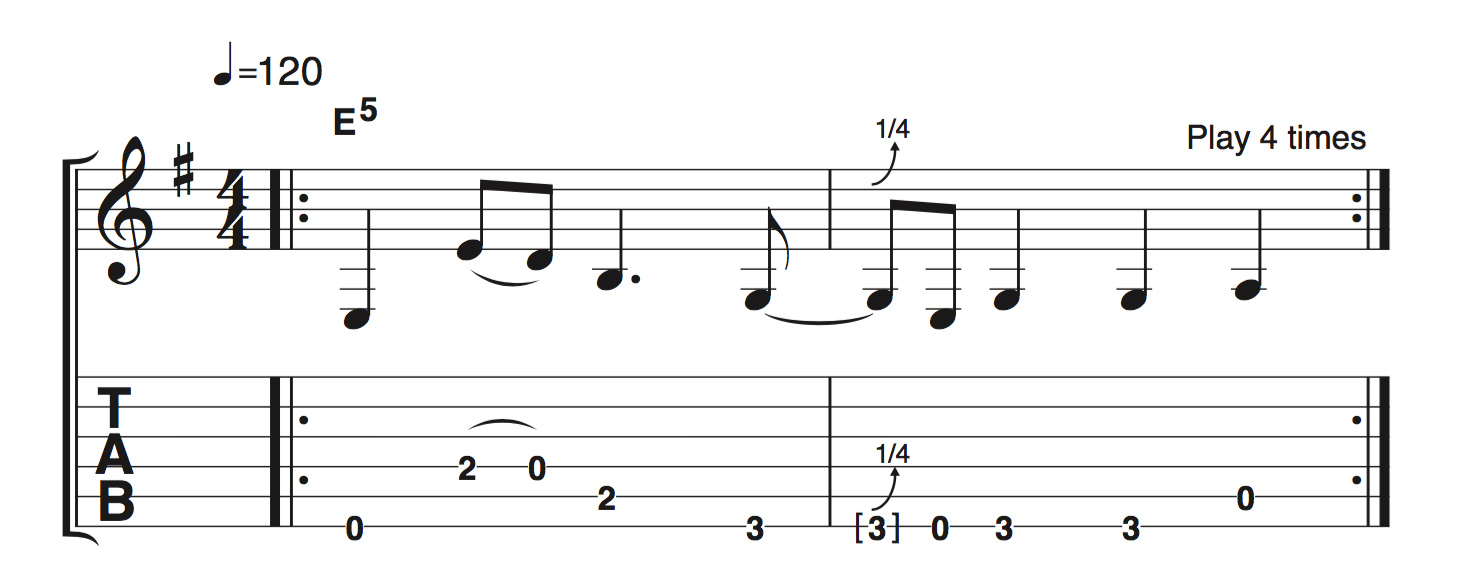
Take a look at the first scale shape then play this riff where we’ve used every notefrom the E minor pentatonic scale. Try reordering them to make up your own riff.
Example 2. Same scale, different position
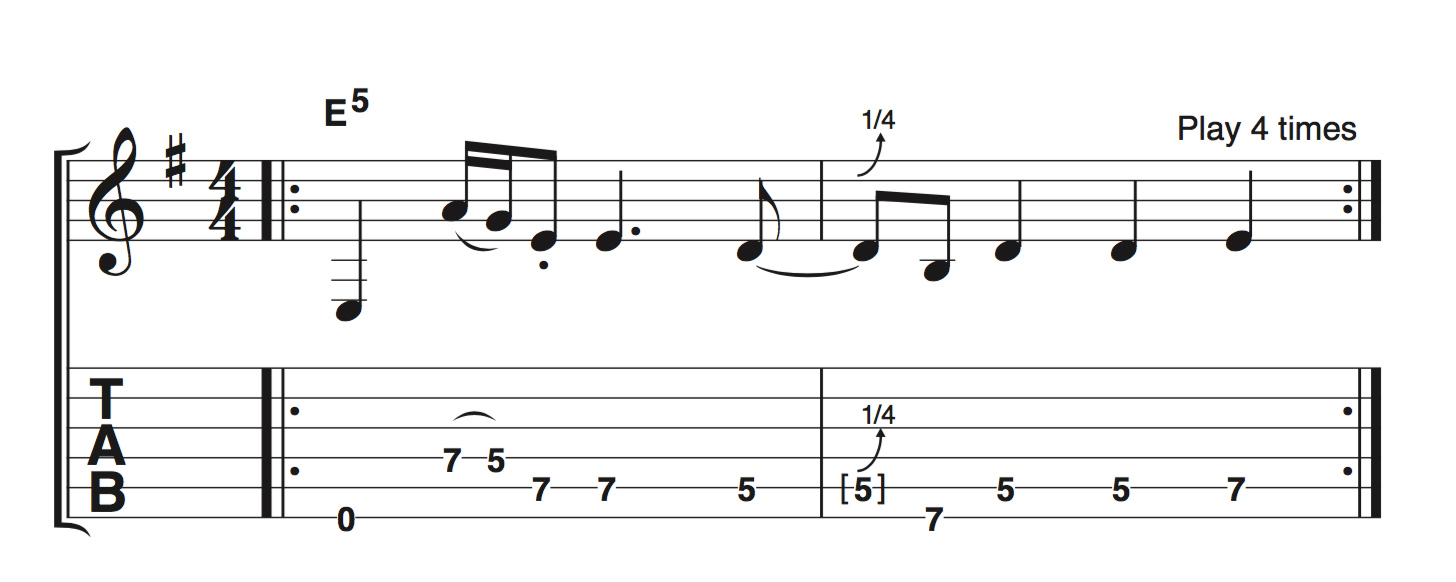
This one’s a bit harder. Just remember it’s still the E minor pentatonic scale because the notes are the same (E G A B D).
- These are the best beginner electric guitars right now
Get The Pick Newsletter
All the latest guitar news, interviews, lessons, reviews, deals and more, direct to your inbox!
Chris has been the Editor of Total Guitar magazine since 2020. Prior to that, he was at the helm of Total Guitar's world-class tab and tuition section for 12 years. He's a former guitar teacher with 35 years playing experience and he holds a degree in Philosophy & Popular Music. Chris has interviewed Brian May three times, Jimmy Page once, and Mark Knopfler zero times – something he desperately hopes to rectify as soon as possible.








![Joe Bonamassa [left] wears a deep blue suit and polka-dotted shirt and plays his green refin Strat; the late Irish blues legend Rory Gallagher [right] screams and inflicts some punishment on his heavily worn number one Stratocaster.](https://cdn.mos.cms.futurecdn.net/cw28h7UBcTVfTLs7p7eiLe.jpg)


